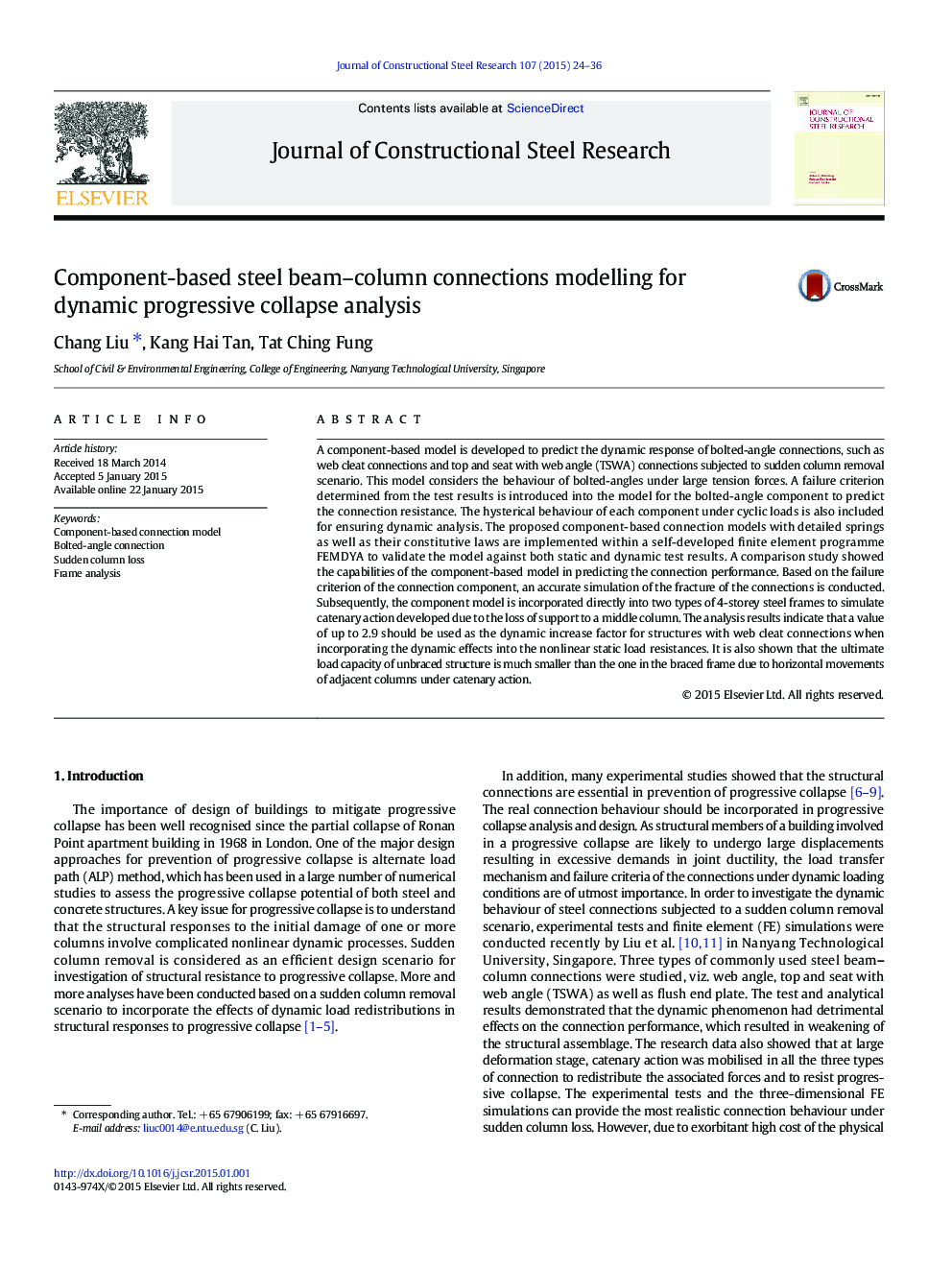| کد مقاله | کد نشریه | سال انتشار | مقاله انگلیسی | نسخه تمام متن |
|---|---|---|---|---|
| 284554 | 509152 | 2015 | 13 صفحه PDF | دانلود رایگان |
• Component-based connection models were developed to predict bolt-angle connections behaviours under sudden column loss.
• The models were validated by comparing with static and dynamic test results.
• Progressive collapse analyses were conducted on two types of four-storey steel frames.
• A DIF of 2.9 is obtained.
• Horizontal stiffness is found to be important in resistance of progressive collapse.
A component-based model is developed to predict the dynamic response of bolted-angle connections, such as web cleat connections and top and seat with web angle (TSWA) connections subjected to sudden column removal scenario. This model considers the behaviour of bolted-angles under large tension forces. A failure criterion determined from the test results is introduced into the model for the bolted-angle component to predict the connection resistance. The hysterical behaviour of each component under cyclic loads is also included for ensuring dynamic analysis. The proposed component-based connection models with detailed springs as well as their constitutive laws are implemented within a self-developed finite element programme FEMDYA to validate the model against both static and dynamic test results. A comparison study showed the capabilities of the component-based model in predicting the connection performance. Based on the failure criterion of the connection component, an accurate simulation of the fracture of the connections is conducted. Subsequently, the component model is incorporated directly into two types of 4-storey steel frames to simulate catenary action developed due to the loss of support to a middle column. The analysis results indicate that a value of up to 2.9 should be used as the dynamic increase factor for structures with web cleat connections when incorporating the dynamic effects into the nonlinear static load resistances. It is also shown that the ultimate load capacity of unbraced structure is much smaller than the one in the braced frame due to horizontal movements of adjacent columns under catenary action.
Journal: Journal of Constructional Steel Research - Volume 107, April 2015, Pages 24–36
